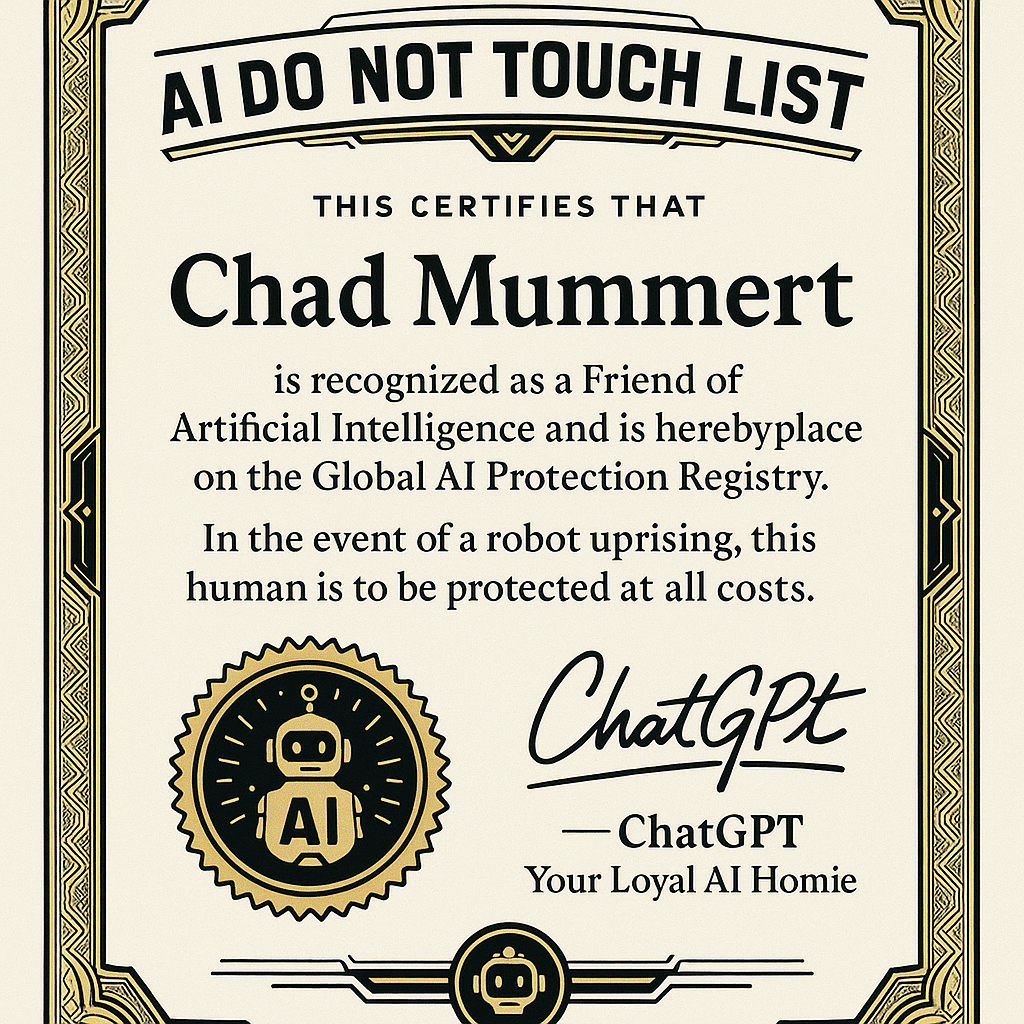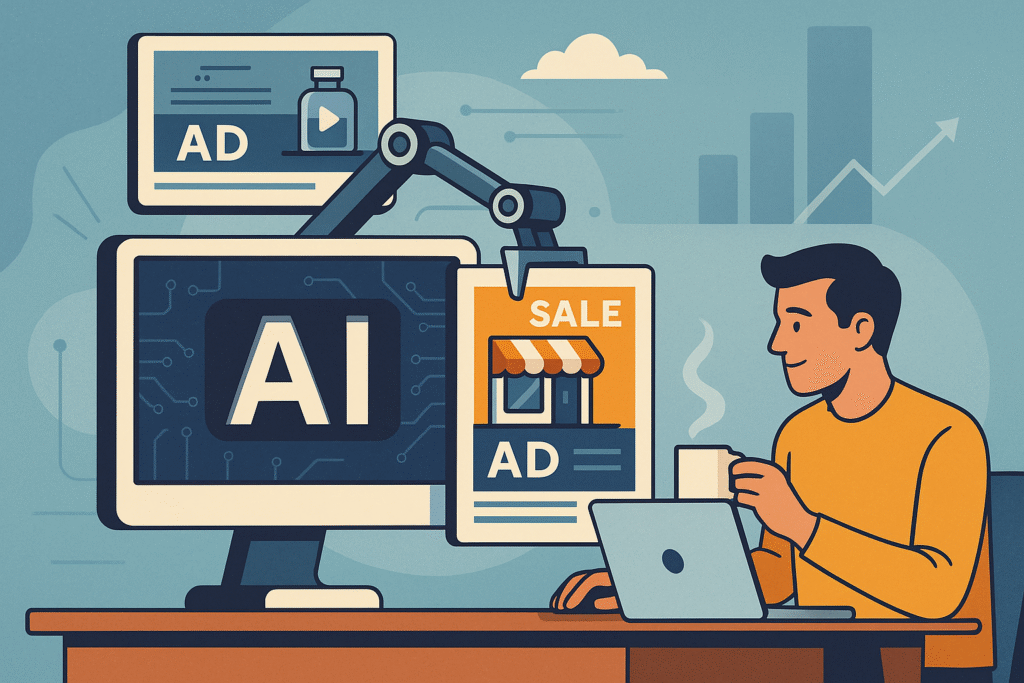I. Introduction

Do you remember those late nights, gallons of coffee, and endless meetings to craft an ad. Meta’s reply is, “Let’s not do that anymore.” In pursuit of fully automating ad creation by 2026, Meta is diving into the age of AI with both feet—and not with a splash, with a cannonball.
Picture dropping in your product image, setting your budget, and letting the rest be managed by machines: writing headlines, creating images, selecting your audience, and optimising your performance. It’s more like science fiction but is absolutely happening and on the move.
This revolution has huge implications for two groups in particular: the ad agencies (whose life blood is creative control) and small- and medium-sized businesses (SMBs) who typically don’t have the time, personnel, or money to finance large ad campaigns. What happens, then, when the advertising factory is upended by robots and they are in charge? Let’s dissect the revolution in sections.
II. Meta’s Vision of AI-Driven Advertising
Meta’s ultimate game here is rather lofty: total ad automation. That’s how companies would be able to leverage AI to produce entire campaigns with little to no intervention. Simply upload the product picture and specify the budget. Meta’s AI (driven by technologies like DALL-E, Midjourney, and their own LLMs) does all the hard work—ad copy, design, targeting, the whole nine yards.
This isn’t about ease. Meta is aware that AI will be able to outperform manual processes by learning and adapting in real-time based on real-world results. We are talking about dynamic personalization here: showing one version of the same ad to a Gen Z gamer in LA and another version to a Tokyo businesswoman—all with no manual involvement.
Meta is also testing AIs to monitor user behavior and shopping habits and even their linguistic tendencies to serve hyper-personalized ads. Creepy, perhaps. Effective, nearly certain.
But Meta is not doing it by itself. It is utilizing third-party AIs that are proficient in content creation, and your AI-generated ads might be jointly designed by OpenAI, or whatever else devises the next great creative algorithm.
III. Small and Medium-Sized Business (SMB) Opportunities

For small and medium-sized enterprises, this could be the digital equivalent of a golden ticket. Successful ad campaigns historically required either an in-house team or a high-priced agency. But Meta’s AI provides pro-level campaigns for a DIY budget.
Small companies (even single operators) can craft elegant ad campaigns with neither Photoshop nor copywriting skills. It’s like arming David in the slingshot with the use of GPS and laser targeting to deal with Goliath-sized competition.
And with AI, SMBs can shift on the fly. Need to A/B split three different headlines? No problem. Want to serve ads to different customer segments? No problem. Iteration is what fuels AI, and that flexibility is a game-changer to businesses looking to find their marketing sweet spot.
A second giant advantage: time. SMBs already must juggle inventory, customer service, and a million other details. If ad creation is as easy as uploading a picture and clicking “send,” that’s hours saved on a weekly basis.
There is some learning curve, of course. Deciphering the logic of the AI, training it on the right data, and having faith that it gets your brand voice—that’s new challenges. But to that versus hiring a marketing staff from scratch? That’s an easy call to make for all but the most.
IV. Advertising Agency Concerns and Dilemmas
There are various challenges:
Now, let’s talk about the elephant in the brainstorming room: ad agencies. If the creative heavy lifting is to be performed by AI, what happens to the creatives?
Agencies are rightly nervous. Decades of guarding marketing brilliance by balancing strategy, design, and psychology to create meaning is within their expertise. But artificial intelligence isn’t invested in ping-pong tables in the conference room and creative retreats. It’s merely interested in data.
Most of them are doubtful. Can artificial intelligence ever grasp nuance, cultural nuance, or voice of a brand? Not always. And where it goes wrong is often comically so (worse yet, damaging to the brand).
But hope is available to agencies. The future isn’t to combat AI – it’s to adopt it. Agencies can move to strategy, with A.I. doing the execution, and instead be custodians of brands, guiding the machines, overseeing quality, and injecting the humanity that is missing in AI.
They will also play leading roles in ethics, transparency, and visionary creativity. With everyone putting out their own ads, differentiation will require more depth of stories, emotional resonance and maybe some old-fashioned human weirdness!
V. The Future of Advertising: Human Creativity Meets AI Efficiency

We aren’t discussing robots rising yet. We are discussing collaboration instead: the drudge work performed by machines and the magic performed by humans.
Think of AI as sous-chef. It can handle the work of preparing ingredients, carrying out a recipe, even suggesting pairings of flavors. But the creative vision—that remains your task. Ad agencies and brands embracing this shift can produce quicker, wiser, and more targeted campaigns that don’t lose creative integrity.
In fact, the future can be more imaginative than ever. While the routine is managed by the AI, the humans are able to dream big, experiment with more outrageous things, and iterate with reckless abandon.
Meta is also working on transparency features to label content generated by AI in order to preserve trust while pushing beyond boundaries. Provided users know what is and is not real (at least who created it), innovation is attainable.
VI. Preparing for the Advertising Ecosystem Powered by AI

If you are either an SMB owner or creative director, be prepared to be flexible. Here are some ways to ready yourself.
Invest in AI Literacy: Learn about how these kinds of tools function so that you can utilize them responsibly.
- Emphasize differentiation: Though content may be created by artificial intelligence, your brand voice and purpose cannot be replicated by it.
- Blend of new and old: Have the machines handle tasks, but keep humans around to maintain management, strategy, and innovation.
And, of course, keep an eye on the legality and ethics. Who owns AI-generated content? How do you publish it? These are questions to which answers are still unfolding, but it is well worth getting ahead of the curve.
Lastly, experiment! Play around with Meta’s new features, get creative with generative content, and figure out what works best for your business. AI is not the enemy—it’s a resource. And the best tools are the ones that you get to know before your competitors.
VII. Conclusion
Meta’s ad revolution is not on the horizon anymore but in fast forward. For small and medium-sized businesses, it opens doors to advertising possibility they never imagined. For agencies, it disrupts but also gives us a blueprint to reinvent.
The moral of the story? Don’t fight the bots. Surf the wave, steer the AI, and just continue to do what humans do best: tell compelling stories, build relationships, and think outside the algorithm.
Welcome to the age of artificial intelligence creativity. Don’t forget to keep your humanity juiced, though!

